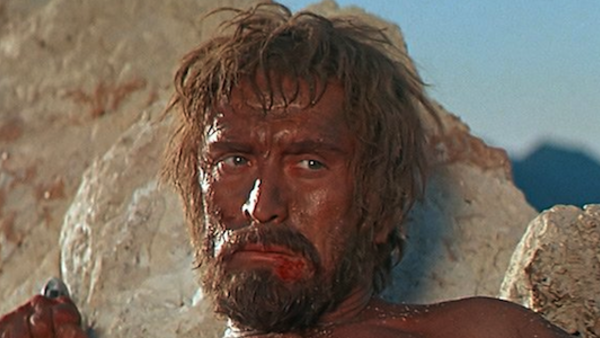8 Most Iconic Kirk Douglas Roles
1. Spartacus - Spartacus (1960)

Set in Ancient Rome, Spartacus tells the real life story of a slave uprising led by a Thracian gladiator named Spartacus. Whilst training he meets and falls in love with Varinia (Jean Simmons), a servicing girl. Suffering multiple humiliations at the hands of his masters, Spartacus leads the other gladiators in overwhelming the guards and escaping.
Their plan is to return to their homes outside of Italy, and as his movement grows and grows, escaped slaves flock to his side, bringing his following to the size of a small army. Eventually he is defeated and the Romans offer to spare their lives if they give up Spartacus. What follows is one of the most famous scenes in history, as each man rises to his feet declaring, “I’m Spartacus!” in a sublime act of defiance as they refuse to surrender their man or their cause.
A story of hope and resistance against oppression, Douglas’ performance of the reluctant but fiercely rebellious slave leader is as charismatic as it is powerful. The film itself was a special project for Douglas, who was producing the film with his own production company. He commanded a large part of creative control, being responsible for the hiring of Stanley Kubrick as director and Dalton Trumbo as the writer, which has its own special significance.
During the 1950s many filmmakers, actors, and screenwriters were blacklisted from working in Hollywood after being accused of being communists or communist sympathisers. The film’s writer, Dalton Trumbo, was one such writer. Having secretly been writing films under pseudonyms for years, Douglas personally selected Trumbo as the writer and took great risk in publicly announcing Trumbo as such. However the film was a huge hit and was a large influence in ending the blacklist. Considering this, it gives the I’m Spartacus scene added poignancy as an allegory for the communist witch hunts of that era.
Spartacus is without a doubt Douglas’ most iconic role. Few films are held in such esteem as this one, and its success as a popular movie and as a piece of cinematic art has elevated it to the pantheon of all time classics.